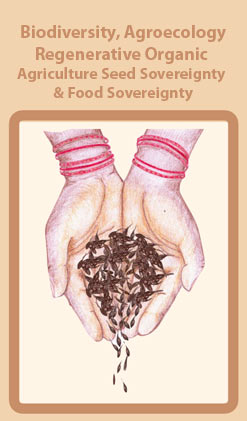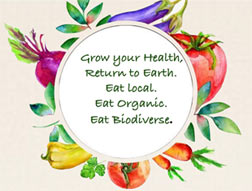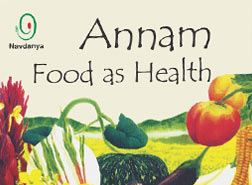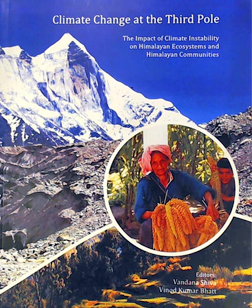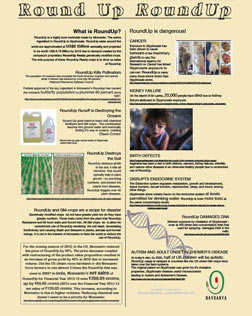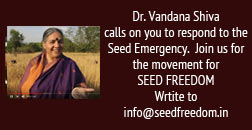Dr Vandana Shiva
“For it is of anna that indeed all beings are born, it is from anna that they obtain the necessary sustenance for living, and having lived, it is into anna that they merge at the end”
Jatindar Bajaj
In the last decades, most of our agriculture and health traditions have been destroyed and forgotten, chemicals have desertified our soils and waters, monocultures and uniformity have worldwide impoverished the Earth, our minds, our food and our health. Mechanistic measurements of agriculture outputs reduced the agriculture system to yields of monoculture commodities leaving out the quality of food, biodiverse outputs, costs of external inputs, and the ecological health of the system.
This mechanistic paradigm promotes what I have called the monoculture of the mind. It is blind to, and intolerant of diversity, in nature and in culture. With industrial agriculture, more than 90% of the biodiversity has disappeared and with it the diversity we need for a healthy and balanced diet. A homogenous, uniform diet lacking in diversity is unable to provide the diversity of nourishment that our body need to perform the diversity of functions that make us mentally and physically healthy.
As the system of industrial agriculture and industrial food processing started to dominate, epidemics of chronic diet related diseases started to spread. Most of the chronic diseases of our times are “foodstyle” diseases such as neurological problems, metabolic disorders like obesity and diabetes, cancer, infertility, cardiovascular issues. They are associated with our changing diets and the food we are eating – chemically grown foods, reduced diversity, highly processed foods and junk foods: these nutritionally empty processed commodities largely contribute to diseases linked to deficiencies of vital diverse nutrients in our diet.
We need to look outside the mechanistic paradigm and outside the agro-industrial complex to find solutions to the agriculture and health crisis. This is where our indigenous systems of agroecology combined with the new emerging sciences of life as self organised complexity and intelligence, provide new possibilities for solutions to the health crisis and pathways to health and wellbeing.
The knowledge we need for breeding, selecting, evolving seed and growing food is knowledge of biodiversity and living seed, of living soil and the soil food web. This complex knowledge of interacting, self organising, self maintaining, self renewing and self evolving systems, that farmers have contributed over 10,000 years of evolution of agriculture and farmers’ knowledge, is the only viable alternative to the actual mechanistic framework which is failing in providing diversity, balance and resilience.
Ecological systems of food and farming have the potential to rejuvenate the planet and also hold the potential for rejuvenating human health. Because of the intimate connection between the biodiversity in the soil, the biodiversity of our plants, and the biodiversity in our gut, between ecological sustainability and health – health is a continuum, from the earth to our bodies.
Our bodies cannot deal with toxic chemicals, with junk food, with synthetic food and fake food. Chemical free biodiversity intensive ecological agriculture is the most effective solution to the epidemic of food style diseases. Only our indigenous knowledge, reinforced by the emerging paradigm of biology and ecology offers the answers to the health problems of our age.


